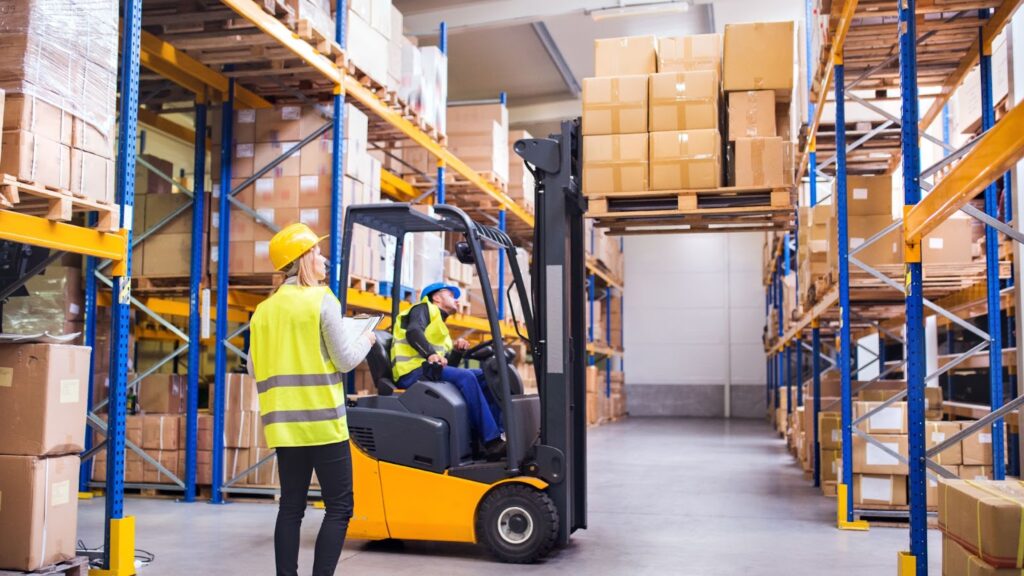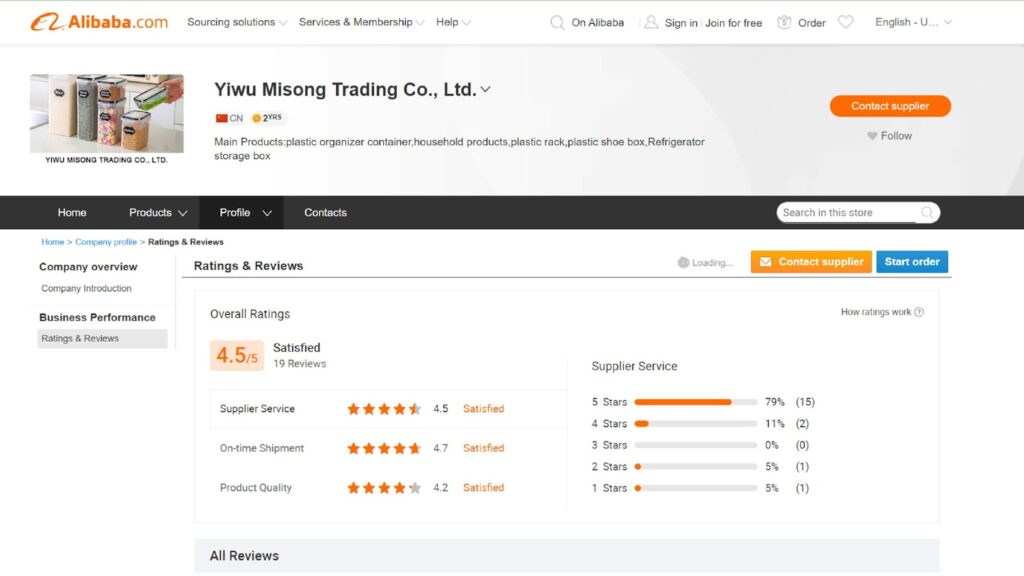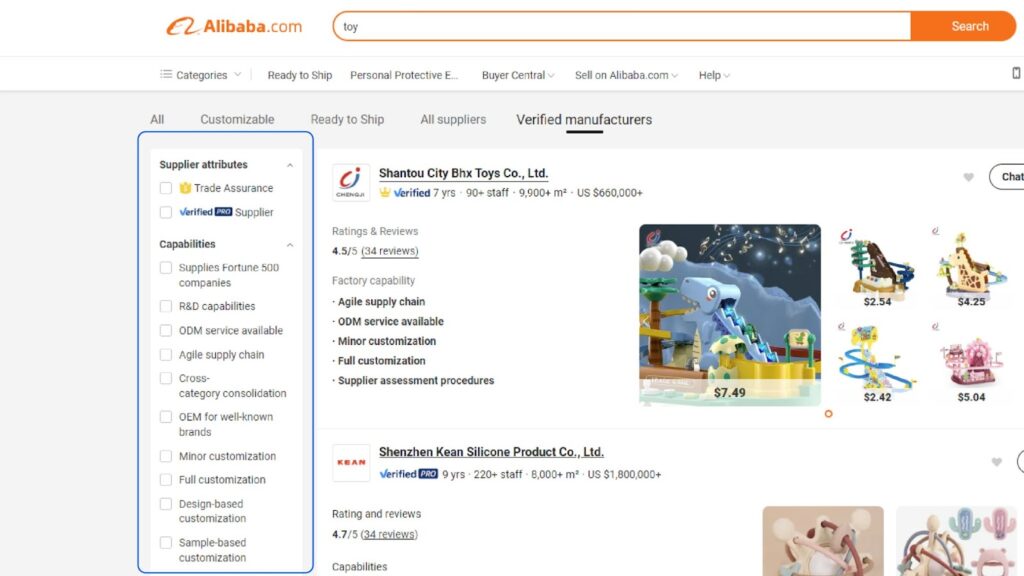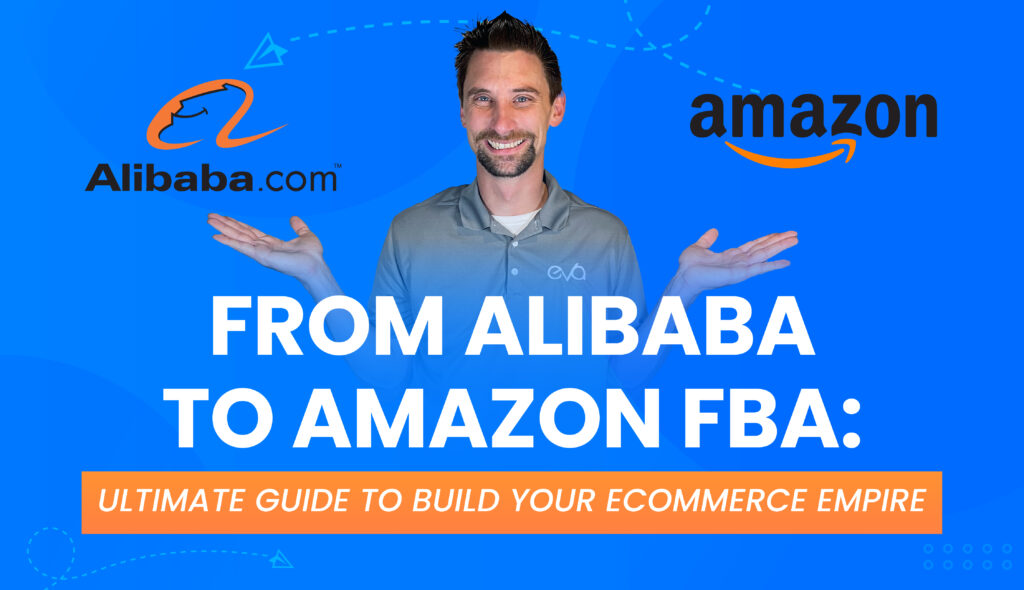In the ever-expanding world of eCommerce, the combination of Alibaba and Amazon FBA presents a powerful opportunity for entrepreneurs to build thriving businesses.
By leveraging the benefits of Alibaba’s vast supplier network and Amazon FBA’s streamlined fulfillment services, sellers can tap into a global marketplace and maximize their profits.
This article will explore advanced strategies and techniques for sourcing, negotiating, and scaling your Amazon FBA business using Alibaba.
Table of Contents
What Is Alibaba?

Alibaba.com is the world’s largest B2B online marketplace, connecting businesses globally for product sourcing, trading, and eCommerce success. 🌍💼.
It connects you directly with manufacturers, wholesalers, and suppliers from around the globe, offering an extensive range of products at competitive prices.
So, why should you consider Alibaba.com for your Amazon product sourcing? Let’s explore the advanced-level benefits and strategies that will empower your business to soar.
1. Unparalleled Product Variety and Customization
On Alibaba.com, you can access an immense product catalog covering virtually every category imaginable. Whether you’re selling electronics, fashion, home goods, or any niche product, Alibaba.com has you covered.
For example, imagine you’re an Amazon seller focusing on home decor. By exploring Alibaba.com, you can discover unique suppliers specializing in handmade, artisanal home decor products sourced directly from different regions of the world.
With Alibaba.com, you can tap into the latest product trends and offer your customers a wide selection that sets your brand apart.
What sets Alibaba.com apart is the ability to customize products according to your brand’s unique specifications. From packaging design to product features, you can work closely with suppliers to create exclusive, private-label products that stand out in the Amazon marketplace.
For instance, let’s say you’re launching a beauty brand and want to offer a unique line of skincare products. Alibaba.com allows you to collaborate with suppliers to create custom formulations, design eye-catching packaging, and develop a product that truly represents your brand identity.
2. Competitive Pricing & Profit Margins
One of the key drivers of success on Amazon is competitive pricing. Alibaba.com empowers you to source products at prices that allow for healthy profit margins.
You can negotiate favorable prices and secure bulk discounts by directly connecting with manufacturers and cutting out middlemen. Conduct thorough market research, analyze competitor pricing, and leverage your negotiation skills to maximize profitability.
For example, let’s say you’re selling smartphone accessories on Amazon. By leveraging Alibaba.com, you can connect with suppliers who offer competitive pricing for items like phone cases, chargers, and screen protectors.
Negotiating bulk orders with these suppliers can lead to significant cost savings, enabling you to offer competitive prices on Amazon while still maintaining healthy profit margins.
3. Supplier Verification & Quality Control

In the advanced world of eCommerce, ensuring product quality is paramount. Alibaba.com provides robust tools and verification processes to help you find trustworthy suppliers. Look for suppliers with a proven track record, positive ratings, and customer reviews. Consider Alibaba’s “Gold Supplier” status as an indicator of reliability.
Additionally, leverage third-party inspection services to verify product quality before purchasing. By maintaining high standards of quality, you build trust with your Amazon customers and cultivate a strong brand reputation.
For instance, if you’re sourcing electronic gadgets from Alibaba.com, selecting suppliers with a history of delivering high-quality products is crucial. Look for suppliers who have certifications such as ISO or relevant industry certifications.
Conduct due diligence by reading customer reviews and reaching out to previous buyers to ensure a positive supplier experience. Prioritize suppliers who offer product warranties and excellent customer support to mitigate any potential quality concerns.
4. Streamlined Communication & Collaboration
Efficient and effective communication with suppliers is crucial for a successful partnership.
Alibaba.com offers advanced communication tools that allow you to connect with suppliers in real-time, breaking down language and cultural barriers.
Use messaging platforms, video calls, and email to discuss product specifications, negotiate terms, and build strong relationships. Prompt communication ensures smooth operations, minimizes misunderstandings, and accelerates your time to market.
For example, when communicating with suppliers on Alibaba.com, you must provide clear and detailed specifications for the products you’re sourcing.
Be proactive in asking questions, seeking clarifications, and discussing any customization requirements. Timely communication helps ensure that both parties are on the same page, leading to successful product sourcing and delivery.
5. Scalability & Growth Potential

Alibaba.com is not just a platform for sourcing products; it’s a gateway to scalability and growth. As your Amazon FBA business expands, Alibaba.com can support your increasing demand.
Collaborate with suppliers who can scale their production, meet your growing orders, and maintain consistent quality. Establish long-term relationships, communicate your future business plans, and align your goals with suppliers who are committed to supporting your growth journey.
For instance, if you’re experiencing significant growth in your Amazon sales, discuss your projected order volumes with your suppliers on Alibaba.com. Ensure they have the production capacity and resources to handle your increasing demands.
By nurturing strong partnerships, you create a mutually beneficial environment where suppliers are motivated to invest in their production capabilities to meet your evolving needs.
How To Source Products from Alibaba for Amazon FBA
Step 1: Define Your Product Criteria
Before diving into Alibaba.com, it’s crucial to define your product criteria clearly. Identify the specific product category, features, and specifications you’re looking for.
Consider your target audience, competition, and market trends to guide your decision-making.
For example, if you’re targeting the fitness niche, you may seek gym equipment with certain specifications or unique design elements.
By establishing clear criteria, you can streamline your search and focus on products that align with your business goals.
Step 2: Conduct Advanced Product Research

When searching on Alibaba.com, go beyond the surface level. Utilize advanced product research techniques to identify the most promising opportunities. Look for products with high demand, low competition, and the potential for differentiation.
Analyze product reviews, ratings, and sales data to gauge market viability. Leverage external tools and resources, such as Amazon research software or keyword analysis tools, to uncover hidden product opportunities and identify gaps in the market. By conducting advanced research, you’ll position yourself for success in a competitive Amazon landscape.
For instance, let’s say you’re interested in sourcing kitchen gadgets. Use Amazon research software to identify popular kitchen product categories with high sales volumes but relatively low competition.
Look for specific product features or niches within those categories with positive customer reviews but limited options on Amazon.
By targeting these underserved segments, you can find opportunities to source unique kitchen gadgets from Alibaba.com that cater to a specific customer need.
Step 3: Utilize Advanced Search Filters & Parameters

Alibaba.com offers advanced search filters and parameters to refine your product sourcing process.
Take advantage of these tools to narrow down your search results and find suppliers that meet your specific requirements. Filter by factors such as minimum order quantity, price range, supplier location, and trade assurance level.
Additionally, explore options like product certifications, shipping options, and customization capabilities. Utilizing these advanced filters saves time and effort by focusing on suppliers that align with your sourcing needs.
For example, if you’re sourcing products with specific customization requirements, such as private labeling or packaging, utilize Alibaba.com’s customization filters to find suppliers who offer those services.
Narrow down your options by selecting suppliers with a high trade assurance level, indicating their commitment to product quality and timely delivery. These advanced filters help you find suppliers who can meet your unique needs while ensuring a smooth sourcing process.
Step 4: Vet & Verify Suppliers

Supplier verification is crucial for ensuring a successful partnership. Conduct thorough due diligence to verify the credibility and reliability of potential suppliers. Look for suppliers with a proven track record, positive reviews, and relevant certifications.
Consider Alibaba’s “Gold Supplier” status as an indicator of reliability, but don’t solely rely on it.
Communicate with suppliers directly, asking detailed questions about their production capabilities, quality control processes, and lead times. Request samples to assess product quality firsthand.
For example, when vetting suppliers, request samples of the products you intend to source. Evaluate the quality, functionality, and durability of the samples to ensure they meet your standards.
Order samples from multiple suppliers to compare and choose the best option if possible. Additionally, conduct background checks on the suppliers, such as verifying their business licenses and reviewing their trading history on Alibaba.com.
Step 5: Communicate Effectively with Suppliers
Clear and effective communication is key to a successful sourcing process. Establish a professional and proactive line of communication with potential suppliers.
Clearly communicate your product requirements, customization needs, and any specific packaging or labeling instructions.
Ask for product samples to evaluate their quality, functionality, and suitability for your Amazon business. Maintain open lines of communication to address any concerns, negotiate pricing and terms, and build a mutually beneficial relationship. Effective communication builds trust and sets the stage for smooth collaboration.
When communicating with suppliers, be specific and detailed in your requirements and expectations. Clearly outline product specifications, packaging requirements, and any branding or labeling guidelines.
Step 6: Negotiate Pricing & Terms
Master the art of negotiation to secure the best pricing and terms for your Amazon business. While price is important, consider the overall value offered by the supplier. Discuss bulk discounts, minimum order quantities, and payment terms.
Demonstrate your commitment and potential for long-term collaboration to leverage your negotiating position.
However, always maintain fairness and transparency throughout the negotiation process. You can maximize your profitability and build a strong supplier network by mastering negotiation techniques.
For instance, negotiate for favorable pricing based on your order volume and the potential for future business. Explore options such as tiered pricing, where the unit price decreases as the order quantity increases.
Consider long-term contracts or partnerships that provide you with stability and preferential pricing. However, ensure that the negotiated terms align with your budget and business goals.
Building a mutually beneficial relationship through fair negotiations sets the foundation for a successful sourcing partnership.
Step 7: Inspect & Verify Product Quality
Before placing a substantial order, prioritize product quality verification. Request product samples for inspection or work with third-party inspection services to assess the quality and compliance of the products.
Conduct thorough product testing and inspection to ensure they meet your standards and comply with relevant regulations.
Communicate any necessary modifications or improvements to the supplier. By investing in quality control, you’ll minimize the risk of receiving subpar products and uphold the reputation of your Amazon business.
Consider engaging a reputable third-party inspection service to conduct on-site inspections of the supplier’s production facility.
They can perform product inspections, test the products against agreed-upon specifications, and ensure compliance with safety and quality standards. This additional step provides an extra layer of assurance and gives you confidence in the product quality before proceeding with a larger order.
Step 8: Place a Trial Order
Once you’ve thoroughly vetted the supplier and verified product quality, it’s time to place a trial order. Start with a smaller quantity to test the supplier’s performance, shipping process, and overall order fulfillment.
Evaluate packaging, shipping time, product accuracy, and customer service. Assess the overall experience to ensure the supplier meets your expectations and aligns with your long-term sourcing needs.
For example, place an initial order of a limited quantity to assess the supplier’s ability to deliver products on time and in the desired condition. Monitor the order fulfillment process closely, paying attention to packaging quality, labeling accuracy, and shipping methods.
Evaluate the supplier’s responsiveness to inquiries and ability to handle any challenges during the trial order. Based on the results, you can decide to continue the partnership or explore other sourcing options.
Step 9: Establish Long-Term Relationships
For sustainable success, focus on building long-term relationships with reliable suppliers. Cultivate open and transparent communication channels, maintain professionalism, and honor your commitments.
Regularly evaluate supplier performance and address any issues promptly. As your Amazon business grows, communicate your future business plans to suppliers, and work together to ensure scalability and continuity. Building strong supplier relationships establishes a competitive advantage and allows for smoother operations in the long run.
Nurturing long-term relationships with your suppliers can lead to benefits such as priority production, preferential pricing, and access to exclusive product lines.
Regularly review and communicate your sales forecasts, product demand, and any changes in your business strategy. This collaboration will enable your suppliers to plan their production accordingly, ensuring a steady supply of products for your Amazon business.
How To Ship Your Products From Alibaba to Amazon FBA
Follow the steps below to minimize delays, reduce costs, and optimize your logistics for maximum success. Let’s get started!
Step 1: Determine the Most Suitable Shipping Method


When shipping Alibaba products to Amazon FBA, choosing the most suitable shipping method is essentially based on your specific needs and requirements. Consider factors such as product size, weight, urgency, and budget.
The two primary shipping methods for international shipping are air freight and sea freight. Air freight is faster but generally more expensive, while sea freight offers cost savings but has a longer transit time.
Evaluate your product’s characteristics and your desired timeline to select the optimal shipping method.
Step 2: Calculate Shipping Costs & Factor Them into Product Pricing

Shipping costs can significantly impact your profitability, so it’s crucial to calculate them accurately and factor them into your product pricing strategy.
Consult with shipping providers and freight forwarders for detailed quotes based on your specific shipment parameters.
Consider factors such as shipping volume, destination, shipping method, and any additional services required (e.g., customs clearance).
Calculating shipping costs upfront and incorporating them into your product pricing’ll ensure that your business remains profitable and competitive.
Step 3: Optimize Packaging for Cost and Protection
Efficient packaging is vital in minimizing shipping costs and protecting your Alibaba products during transit. Work closely with your supplier to optimize packaging dimensions and materials.
Utilize packaging solutions that strike a balance between cost-effectiveness and adequate protection. Consider using customized packaging solutions specifically tailored to your product dimensions and requirements.
By optimizing packaging, you can reduce wasted space, lower shipping costs, and safeguard your products from damage.
Step 4: Coordinate with Your Supplier for Order Consolidation
Order consolidation involves combining multiple product shipments into a single larger shipment. This strategy can help you optimize shipping costs and streamline the logistics process.
Coordinate with your Alibaba supplier to consolidate orders whenever feasible. By consolidating shipments, you can take advantage of larger volume discounts from shipping providers, reduce the number of shipments, and potentially decrease customs clearance fees.
Efficient order consolidation will lead to cost savings and improved overall logistics efficiency.
Step 5: Ensure Proper Documentation and Compliance
Accurate and complete documentation is essential for smooth customs clearance and compliance with shipping regulations. Ensure that all required shipping documents, such as commercial invoices, packing lists, and bills of lading, are properly prepared and accompany your shipment.
Familiarize yourself with the customs regulations and requirements of both the exporting and importing countries. Failure to comply with documentation and regulatory requirements can result in delays, fines, and even seizure of your products.
Consulting with an experienced customs broker or freight forwarder can help you navigate the complexities of international shipping documentation.
Step 6: Partner with a Reliable Freight Forwarder

A reputable freight forwarder can be a valuable partner in ensuring smooth shipping from Alibaba to Amazon FBA. Seek out a freight forwarder with experience in international shipping and familiarity with Amazon FBA requirements.
A reliable freight forwarder can handle various aspects of the shipping process, including booking shipments, coordinating with carriers, managing customs clearance, and providing tracking information. Choose a freight forwarder offering competitive rates, transparency, and excellent customer service.
Step 7: Track and Monitor Shipments Closely
Maintaining visibility and control over your shipments is crucial for proactive logistics management. Utilize tracking tools provided by your freight forwarder or shipping provider to monitor the status and progress of your shipments.
Regularly communicate with your freight forwarder to stay updated on any potential issues or delays. Timely information allows you to proactively address any challenges, ensuring on-time delivery and smooth inventory management at Amazon FBA.
Step 8: Plan for Contingencies and Mitigate Risks
Despite careful planning, unforeseen circumstances can still occur during shipping. It’s essential to have contingency plans in place to mitigate risks and minimize disruptions to your supply chain.
Consider factors such as weather conditions, customs delays, or carrier related issues. Maintain open lines of communication with your freight forwarder and shipping provider to address any challenges promptly. Additionally, consider obtaining cargo insurance to protect your investment in case of loss or damage during transit.
Conclusion
You are now equipped with advanced-level strategies to source products from Alibaba and
ship them to Amazon FBA seamlessly. By leveraging the power of Alibaba’s vast supplier network and implementing our step-by-step processes, you can confidently navigate the complexities of product sourcing and logistics.
Remember to conduct thorough research, vet suppliers diligently, negotiate favorable terms, and optimize your shipping process. These actions will position you for success in your Amazon FBA business.
To stay on top of the latest Amazon selling tips and strategies, we invite you to subscribe to Eva’s newsletter. Our newsletter delivers valuable insights, expert advice, and exclusive content straight to your inbox.
Don’t miss out on the opportunity to stay ahead of the competition and take your Amazon business to new heights. Subscribe today and join a community of successful Amazon sellers who trust Eva for their eCommerce journey.
FAQs
Yes, it is legal to buy products from Alibaba and sell them on Amazon. Many sellers source products from Alibaba to sell on various platforms, including Amazon.
However, it’s important to comply with all applicable laws and regulations, such as intellectual property rights and product safety standards.
Yes, you can ship products from China to Amazon FBA (Fulfillment by Amazon) warehouses. Amazon provides a comprehensive shipping and logistics service called Amazon Global Selling, therefore allows sellers to send their inventory directly from China to Amazon’s fulfillment centers.
Yes, you can resell products sourced from Alibaba. Many sellers use Alibaba as a platform to find suppliers and manufacturers that offer a wide range of products at competitive prices.
By purchasing products from Alibaba, you can then resell them through various channels, including Amazon.
Yes, you can sell on Amazon USA from China.
Amazon provides a platform called Amazon Global Selling which allows sellers from around the world to list and sell products on Amazon’s different marketplaces, including Amazon USA.
However, you need to ensure compliance with Amazon’s policies and guidelines for international sellers.








